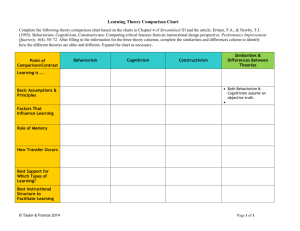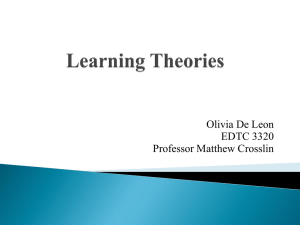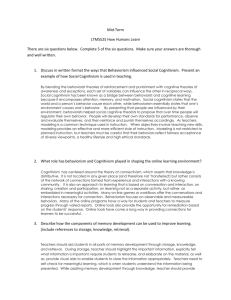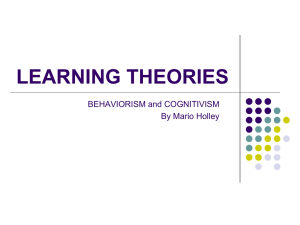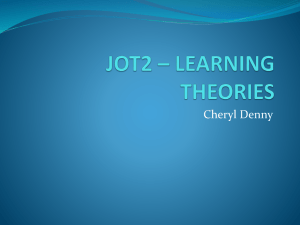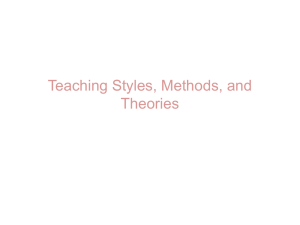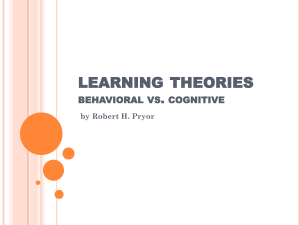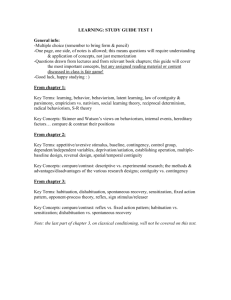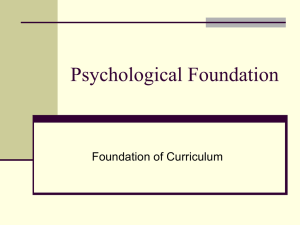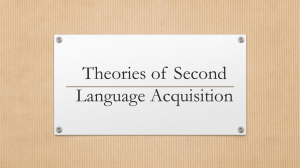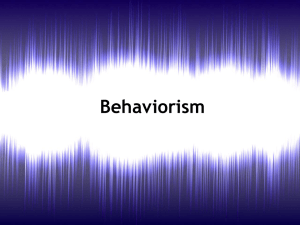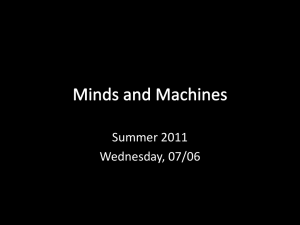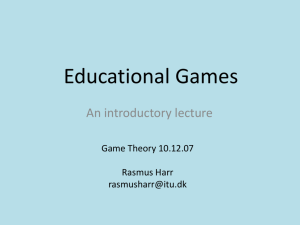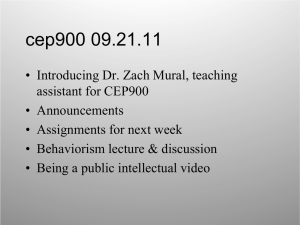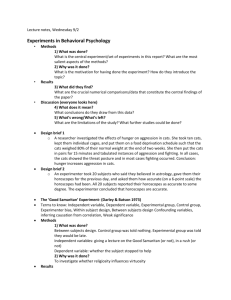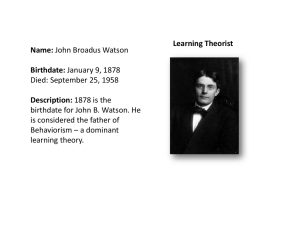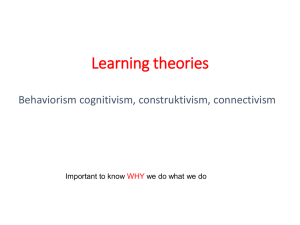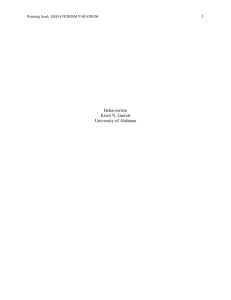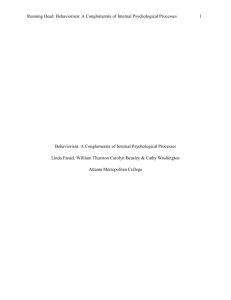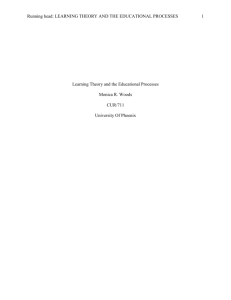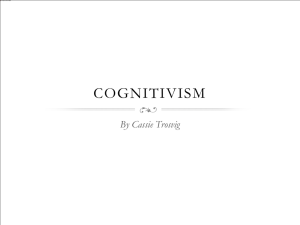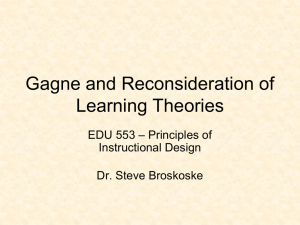EDTC 3320
advertisement
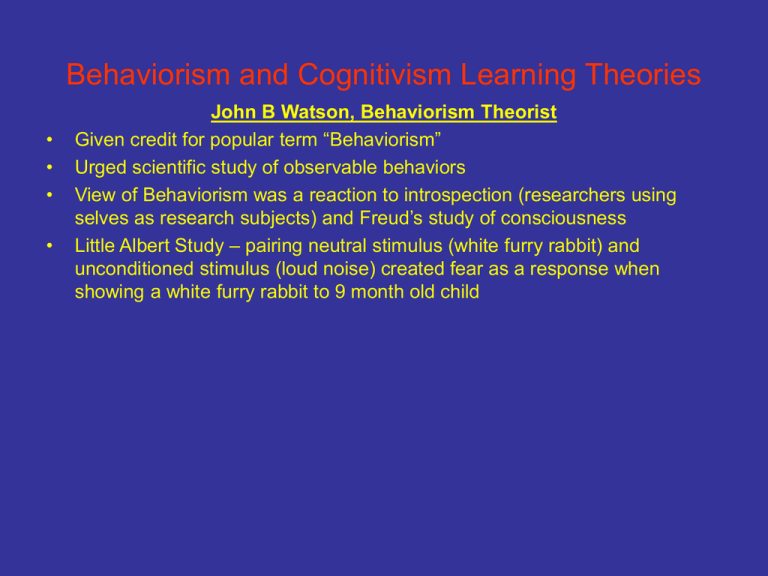
Behaviorism and Cognitivism Learning Theories • • • • John B Watson, Behaviorism Theorist Given credit for popular term “Behaviorism” Urged scientific study of observable behaviors View of Behaviorism was a reaction to introspection (researchers using selves as research subjects) and Freud’s study of consciousness Little Albert Study – pairing neutral stimulus (white furry rabbit) and unconditioned stimulus (loud noise) created fear as a response when showing a white furry rabbit to 9 month old child Robert Gagne, Cognitive Theorist • • • Famous for his “Conditions of Learning” Nine Events of Instruction – gain attention, inform student of objectives, stimulate recollection of prior learning, present stimulus material, provide student guidance, elicit performance, provide feedback, assess performance, enhance retention transfer His work also known as Gagn’es assumption – Different types of learning exist due to conditions in instructional environment Behaviorism Learning Theory • Student is passive, responding to environmental stimuli • Clean slate (tabula rasa) – behavior shaped by positive or negative reinforcement/punishment • Reinforcement increases likelihood of behavior re-occurring • Punishment decreases likelihood of behavior re-occurring Cognitive Learning Theory • Mind is compared to a computer – information goes in and is processed • Focuses on inner mental activities – opening the “black box” of the human mind is important in understanding how we learn • Mental processes need exploration – thinking, learning, remembering, problem solving • Learning is defined as changing a person’s schema, or knowledge Cognitive Learning Theory • Students are not considered “programmed animals” like they are in Behaviorism • We are rational beings that need to actively participate in order to learn • Actions are results of thinking • Behavioral changes show what is going on in a student’s mind How Behaviorism and Cognitivism Impact Teaching • Both theories are used to help determine how students learn • Behaviorism – Students “learn” by changing behaviors in response to environmental stimuli • Cognitivism – Students learn by actively participating in the learning exercises, focus on mental processes Applicability of Behaviorism for Teaching • Not as widely used as it was in early 1900’s • Students learning by changing behaviors in response to stimuli not as effective as in the past • Does not take into account mental processes – thinking, problem solving, remembering Applicability of Cognitivism in Teaching • Students learn better by actively participating • Focuses on knowledge, problem solving, understanding Works Cited Behaviorism. (n.d.). Retrieved October 11, 2008, from Learning-Theories.com. Website: http://www.learning-theories.com/behaviorism.html Cognitivism. (n.d.). Retrieved October 11, 2008, from Learning-Theories.com. Website: http://www.learning-theories.com/cognitivism.html Cognitivism vs. Behaviorism in Learning Theory. (n.d.). Retrieved October 12, 2008, from greenspun.com. Website: http://hv.greenspun.com/bboard/q-and-a-fetch-msg.tcl?msg_id=0056KI Plucker, Jonathan. (n.d.). John B. Watson (1878 – 1958) – Popularizing Behaviorism, The Little Albert Study, The “Dozen healthy Infants”, Life After the University. Retrieved October 12, 2008, from Education Encyclopedia – StateUniversity.com. Website: http://education.stateuniversity.com/pages/2543/Watson-John-B-1878-1958.html. Robert M. Gagne. (n.d.). Retrieved October 12, 2008, from Wikipedia. Website: http://en.wikipedia.org/wiki/Robert_M_Gagn%C3%A9.
